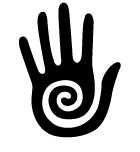
Dear reader,
It is September 2024, which marks one whole spin of our beautiful planet around the Sun since the last edition (a slightly longer interval than intended). As experienced from here, my particular spot on this Earth, Central Europe to be precise, the summer has been full of sunshine, stretching almost endlessly. The heat at times grew so thick it not only melted matter, but also edges of days so that they spilled into each other. The hot air slowed everything down, suspending and warping one’s perceptions of the everyday reality – making everything a little different, like an exotic holiday in the most familiar surroundings. But already as I write this, I am feeling the shadows growing longer, the light becoming sharper, the air, despite the ongoing heat, taking on a cooler, more lucid quality. It’s a subtle shift but one that contains a flavour of melancholy, the growing awareness of a season coming to an end, transforming into a new one.
This 7th issue has a theme of time as its focus. A complex subject which can be approached from myriad perspectives. Hence what you will find here is only a small but carefully selected refraction of viewpoints on this vast topic: From the embodied, intimate, local, to the Earthly and cosmic deep time; from the ephemeral to the seemingly timeless, enclosed as these two are, within themselves. Time understood as, and embodied by, a flowing river or by an ancient forest, because, as biologist Andreas Weber reflects, “a plant is a score in which time composes itself.” Ice too can hold time, as writer Robert Macfarlane explains: “ice has a memory. It remembers in detail and it remembers for millions of years”. In fact, all natural materials are a direct expression of time and they all can remember and tell. From wood, where time is clearly inscribed in circles, to the rocks and minerals which are the guardians of geological time held within them, all matter speaks of time and duration, as the Finnish architect and scholar Juhani Pallasmaa reminds us. All these materials, which we use to build our dwellings and objects of everyday use, speak to us of their experience, their existence in time. Even manmade materials do, just differently, and often less eloquently.
Our human bodies too are a manifestation of time and the ongoing process of aging is a chance to experience this process both from within as well as without. Yet as writer Rose Rouse discusses in her contribution, our culture is far too often in denial of this natural process of time inscribing itself into us. To defy this trend, she set up Advantages of Age.
Yet there is another challenge these days, one of virtual worlds, swallowing up more and more of our days…How differently time is experienced in the virtual realm, disconnected as it is, from the physical world? A world untouched by time is a kind of ghost world. Spending too much time in it feels like time stolen from us. This is why I would like to return to the here and now, the liminal space between seasons, when this process of ongoing metamorphosis becomes clearly noticeable, so that we are reminded of our total immersion in its flow, whether we pay attention to it or not.
“Life is life because it changes.” Tells us the Japanese Zen master Suzuki, translated for us by artist Kaz. This change can only happen in time. Time is a transformation, a life itself. At this point I would like mention one of my favourite quotes by Thomas Mann, from Magic Mountain, a hugely ambitious meditation on the nature of time. Mann understood well that in order to affect the reader profoundly, real time must be exchanged between the writer and us, readers. In return for our time, the great writer gifts us a profound experience, a book which itself embodies time in its pages:
“What then was life? It was warmth, the warmth generated by a form-preserving instability, a fever of matter, which accompanied the process of ceaseless decay and repair of albumen molecules that were too impossibly complicated, too impossibly ingenious in structure. It was the existence of the actually impossible-to-exist, of half-sweet, half-painful balancing, or scarcely balancing, in this restricted and feverish process of decay and renewal, upon the point of existence. It was not matter and it was not spirit, but something between the two, a phenomenon conveyed by matter, like the rainbow on the waterfall, and like the flame.”
I am delighted to be able to share with you this new issue of Tangible Territory and am grateful to all the contributors for their precious time and insight. I am also excited to say we finally have a logo, designed by a recent graduate Natalia Búzková. Natália also designed the cover page for this particular issue, and I am deeply appreciative of her creative input. I am equally grateful to Michal Klodner, for hosting Tangible Territory on his open culture -sustainable media internet server, Node 9. Finally, I am most thankful to all of you, our readers, for your interest in the journal.
Tereza Stehlíková
Prague, 4.9.2024

Visit our content page to find out more about each contribution:
